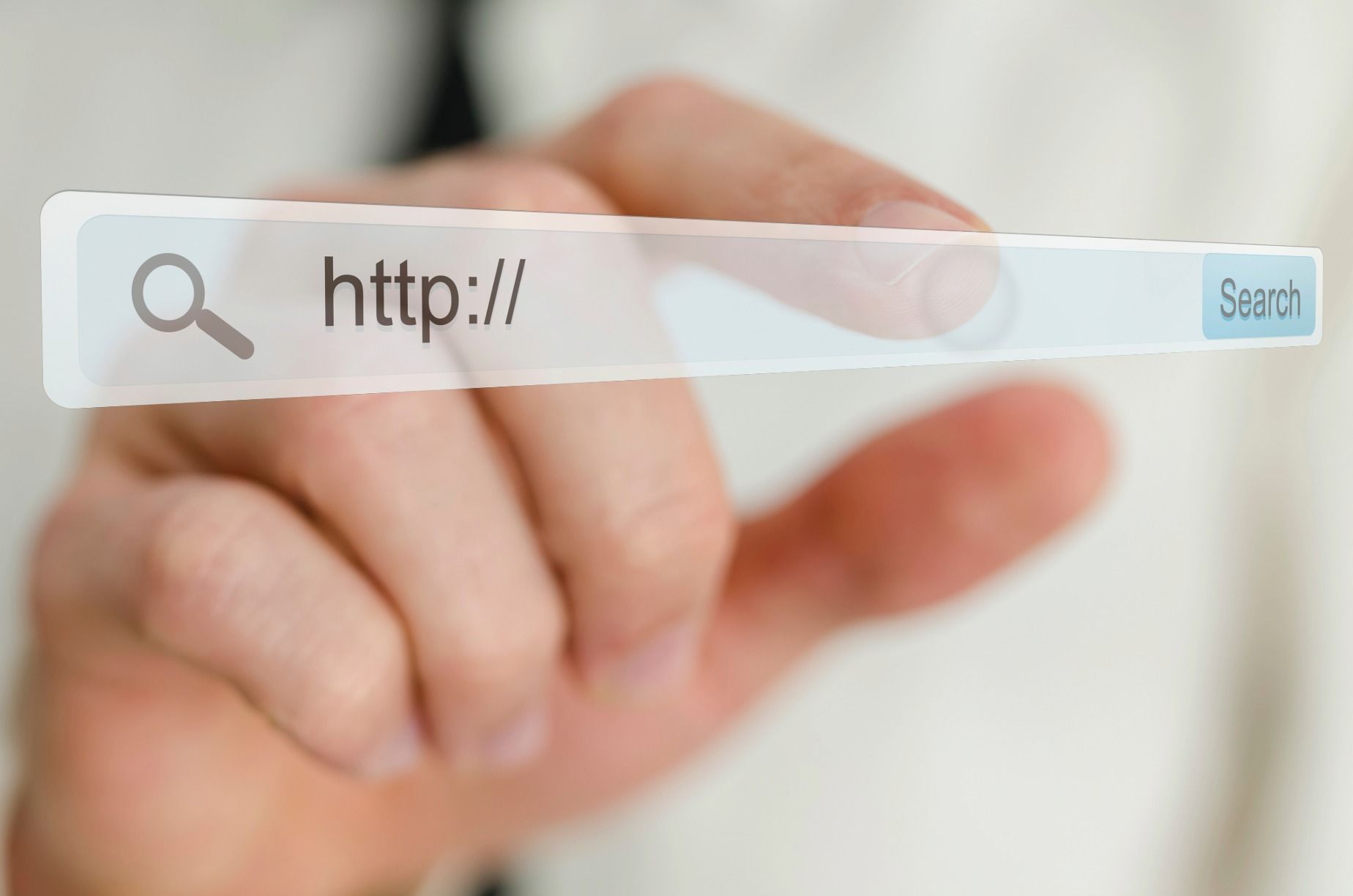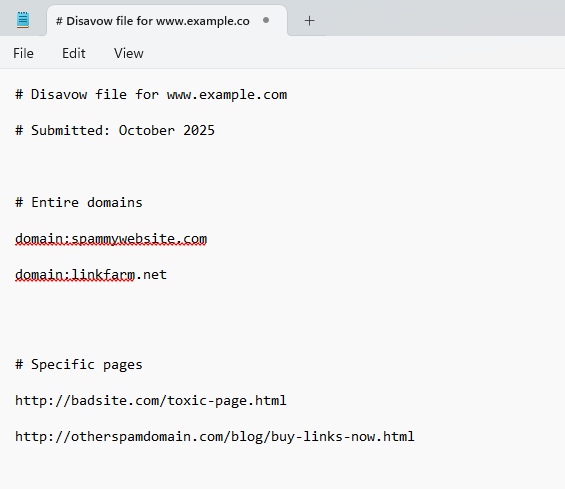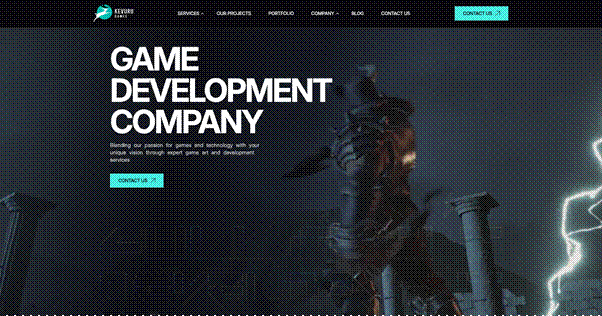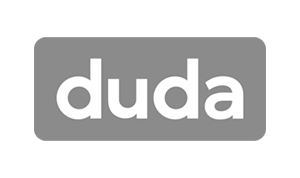Crown Street, Wollongong, 2500
Toxic Backlinks: Why Removal Isn’t Always the Best SEO Strategy
In SEO, few things spark as much panic as the phrase “toxic backlinks.” Run a site audit through one of the big SEO tools and you’ll probably be hit with a warning that makes it sound like your rankings are in serious danger. Suddenly, there’s a long list of “harmful” or "toxic" links pointing to your website, and it feels like a crisis.
It’s no surprise business owners get worried. The word “toxic” alone suggests something poisonous that needs to be cut out straight away, before Google swoops in with a penalty. But here’s the thing: most of the time, those scary reports are a lot more dramatic than reality.
But here’s the twist: rushing to remove toxic backlinks isn’t always the smartest move. In fact, constantly disavowing or obsessing over them can sometimes do more harm than good. Google has made it clear time and time again that most of these so-called “toxic” links simply aren’t worth worrying about. Their algorithms have become sharp enough to recognise spammy signals and just ignore them.
That’s what we’ll unpack in this article. We’ll break down what toxic backlinks actually are, what Google Search Advocate John Mueller has said about them, and why going on a backlink-removal spree can backfire. We’ll also talk about the rare scenarios where taking action makes sense, show you how to disavow links safely if you really need to, and take a look at where link management is headed in the future.
What Are Toxic Backlinks?
Backlinks, at their simplest, are just links from one website to another. They’ve always been at the heart of Google’s ranking system. The logic is straightforward: if plenty of sites link to you, it’s a sign your content is valuable and trustworthy, so you’re more likely to climb higher in search results.
But where do toxic backlinks come in? Interestingly, the term doesn’t even come from Google. It’s a label invented by popular SEO tools like SEMrush, Ahrefs, and Moz. These platforms scan your backlink profile and assign a “toxicity” score, usually based on factors like:
- Links from spammy websites or link farms, often generated by link building bots.
- Links from unrelated niches (e.g., a casino site linking to a dentist).
- Links hidden within footers, sidebars, or irrelevant pages.
- Links from sites in foreign languages with no relevance.
Some of these incoming links can definitely look dodgy at first glance, but here’s the thing: just because a tool flags them as “toxic” doesn’t mean search engines are actually penalising your site or damaging your website’s rankings.
John Mueller and Google’s Stance on Toxic Backlinks
Few voices carry more weight in the SEO community than John Mueller, Google’s Search Advocate and long-time member of Google’s Search Relations team. Known as the go-to source for clarity on how Google Search really works, Mueller has spent years answering questions about backlinks, penalties, and ranking signals. When it comes to backlinks in particular, his guidance has been remarkably consistent and clear.
Over the years, he’s been asked the same question countless times by SEOs and business owners alike: are toxic backlinks something to worry about? His answer is almost always the same: Google is smart enough to ignore the bad ones on its own.
Google’s View: Ignore, Don’t Panic
Mueller has explained in multiple webmaster hangouts, Twitter threads, and conference Q&As that Google’s algorithm is designed to filter out low-quality spammy links without punishing the site that receives them. In other words, just because your backlink report shows hundreds of “toxic” links doesn’t mean Google is actually treating your website as guilty.
This reassurance is crucial. It means that the vast majority of links flagged as “toxic” in third-party tools are simply ignored by Google’s ranking system.
SEO Tools vs. Google’s Reality

Mueller has also been critical of how SEO tools frame backlink analysis. Many platforms assign “toxicity scores” or highlight large numbers of harmful links, but Mueller has said these metrics are often based on assumptions rather than direct signals from Google.
His advice: don’t treat these reports as gospel. They may help identify patterns, but they don’t reflect how Google actually evaluates links. This distinction is important because many agencies use these reports to scare clients into paying for unnecessary backlink removal services.
The Disavow Tool Debate
Perhaps the strongest sign of Google’s stance comes from Mueller’s comments on the Disavow Links Tool. Introduced back in 2012 during the Penguin update era, the tool was meant for websites that had engaged in manipulative link schemes and needed a way to clean up their profiles.
But in recent years, Mueller has suggested that the tool is barely necessary for most site owners. In fact, he’s gone as far as hinting that Google may remove the Disavow Tool in the future, simply because it doesn’t align with modern SEO needs. If Google itself is questioning the tool’s relevance, it reinforces the idea that toxic backlinks don’t have the devastating effect many people fear.
What This Means for Businesses
Taken together, Mueller’s comments create a consistent message: toxic backlinks are not something most site owners need to spend time worrying about. Unless you’ve been actively involved in manipulative link building or have received a manual action penalty, Google will quietly filter out the noise in your backlink profile.
This perspective also raises an interesting question: if Google is so relaxed about toxic backlinks, why does the SEO industry continue to obsess over them?
Why Toxic Backlinks Are Overhyped
So why does everyone in SEO talk about toxic backlinks like they’re the end of the world? Honestly, it comes down to one thing: fear sells. For years, backlink audit tools have made a business out of flashing red warning signs and pumping out long reports full of “toxic” or “harmful” links. The message is clear: your site could be at risk, and unless you act fast, Google might come after you. With charts showing hundreds of spammy links pointing to your domain and claims that they’re harming your visibility in search engine results pages, it’s no wonder so many business owners feel like they’re sitting on a ticking SEO time bomb.
The Role of SEO Tools in the Fear Cycle
Platforms like SEMrush, Ahrefs, and Moz often include a “toxicity score” in their backlink audits. While these tools provide useful data, the way they present it can be misleading. A report that shows thousands of “toxic” links is enough to alarm any business owner unfamiliar with the nuances of SEO. But as John Mueller has pointed out repeatedly, these tools identify toxic backlinks by making assumptions. Their scoring systems are not based on Google’s algorithms but on patterns and metrics that the tools themselves invent.
How Agencies Capitalise on Fear
Unfortunately, some agencies take advantage of these reports. They show clients a spreadsheet full of “harmful” links, then upsell expensive backlink removal or disavow packages. Some even bundle these into SEO packages, pitching them as urgent fixes in an attempt to poach an SEO client from their current provider. In reality, most of the flagged links are harmless noise: low-quality directories, irrelevant blogs, or foreign-language sites that Google simply ignores.
Why Google Chooses to Ignore Spammy Backlinks
The reality is much less dramatic. Since the Penguin update was integrated into Google’s core algorithm years ago, spammy backlinks are no longer treated as an automatic penalty. Instead, Google devalues them. That means if your site suddenly picks up backlinks from shady directories or spammy comment sections, they’re simply discounted. They exist, but they don’t pass PageRank or affect your site’s authority.
John Mueller has even stated:
“So internally we don’t have a notion of toxic backlinks. We don’t have a notion of toxic backlinks internally.
So it’s not that you need to use this tool for that. It’s also not something where if you’re looking at the links to your website and you see random foreign links coming to your website, that’s not bad nor are they causing a problem.
For the most part, we work really hard to try to just ignore them. I would mostly use the disavow tool for situations where you’ve been actually buying links and you’ve got a manual link spam action and you need to clean that up. Then the Disavow tool kind of helps you to resolve that, but obviously you also need to stop buying links, otherwise that manual action is not going to go away.”
A Realistic Example
Picture this: a business owner runs an SEO audit and suddenly sees more than 1,000 backlinks flagged as “toxic.” Panic sets in. They assume this mountain of bad links is the reason their rankings have stalled, so they dive headfirst into months of “clean-up” work, paying for link removals, submitting endless disavow files, the whole lot.
And what happens? Nothing. Their rankings don’t budge. Why? Because Google was never counting those spammy backlinks in the first place. All they really lost was time, money, and focus that could’ve gone into strategies that actually move the needle.
The Bottom Line
The truth is, “toxic backlink” is a term that gets thrown around far more than it should. Sure, your backlink profile might look messy on paper, but unless you’ve actually received a manual penalty notice in Google Search Console, it’s usually nothing to lose sleep over. The hype exists because fear is a great sales tool, not because Google is lurking in the background, ready to punish you for spammy links you never even built.
When Toxic Backlinks Can Actually Be a Problem

That said, there are rare cases where toxic backlinks can cause real harm. These include:
Manual action penalties
If Google detects that you’ve been buying links, creating unnatural links or using tactics to manipulate search engine rankings, it can issue a manual penalty that directly hurts visibility. This is the clearest case where backlink cleanup or disavow is necessary. Manual actions are Google’s way of saying your site has crossed the line into unnatural rankings territory.
Exchanging links
On the surface, swapping backlinks or doing a "link exchange" with other sites might feel harmless, but large-scale exchanging links falls into what Google considers a link scheme. If your backlink profile shows obvious patterns of reciprocal linking just to boost authority, it can be flagged as manipulative and put your search engine rankings at risk.
Deliberate link schemes
If you’re knowingly involved in private blog networks (PBNs), exchanging links with other sites, or participating in paid link schemes, you’re putting your site at risk. These practices fall under what Google calls “link schemes,” and they can trigger penalties designed to remove the advantage of trying to manipulate search engine rankings through unnatural tactics.
The key takeaway? These situations are rare and usually tied to intentional manipulation. For most businesses, a few spammy backlinks here and there aren’t something you need to scramble to fix toxic backlinks for. In fact, Google is already discounting the noise, which means the majority of website owners don’t need to fix toxic backlinks at all.
Why Removing Toxic Backlinks Can Do More Harm Than Good
Here’s what a lot of business owners don’t realise: going on a mission to “clean up” toxic backlinks can actually set your SEO back. In many cases, you’re better off leaving them alone, especially since Google has said it’s smart enough to ignore spammy backlinks or potentially harmful backlinks on its own.
Here’s why:
- Loss of link equity: Many links flagged as “toxic” by SEO tools aren’t harmful at all. Some of them even come from sites with decent authority that pass a bit of link juice. If you blindly disavow them, you’re throwing away value you didn’t even know you had. Imagine accidentally disavowing a high-DA link just because it looked suspicious in a tool — boom, there goes a chunk of your authority and potential impact on your search engine rankings, all because of a misunderstanding of how toxic backlinks affect your site.
- Wasted resources: Hours spent emailing webmasters, chasing removals, or compiling disavow files could be spent on strategies that actually grow your rankings, like producing strong content or building genuine partnerships.
- Over-cleaning: Overzealous disavowing can hollow out your backlink profile. The more good links you strip away, the weaker your site looks to Google and other search engines.
Think of it like pruning a tree. Trim away the dead branches and it flourishes. Hack away at the healthy branches too, and you stop growth in its tracks.
Smarter Alternatives to Removal
Instead of stressing over every report that labels a backlink toxic, the smarter move is to focus on strengthening your overall SEO. Think resilience, not paranoia.
Here’s what that looks like:
Keep an eye on your backlink profile
Check Google Search Console for sudden spikes or unusual patterns. SEO tools can help too, but remember, Google’s data is what really matters when it comes to identifying link spam or low quality links.
Double down on quality
Put your energy into building strong, natural links, whether that’s through great content, SEO-optimised blog posts, industry partnerships, digital PR, legitimate directories, or by investing in professional web design that makes your site worth linking to. These kinds of links send the right signals to search engines and strengthen your website’s SEO over the long term.
Diversify your link building efforts
A healthy backlink profile is like a balanced diet. The more variety you have, the less any random spammy link will stand out.
Pay attention to actual signals from Google
If there’s no manual notice in Search Console, chances are your backlinks aren’t hurting you.
This way, you’re playing offence, not defence. You’re building authority that drowns out the noise instead of wasting time fighting links Google was going to ignore anyway.
truly toxic backlinks
How to Disavow Toxic Backlinks (If You Absolutely Have To)
For most sites, disavowing toxic backlinks or toxic links isn’t necessary. As John Mueller and Google have said, their systems are very good at ignoring spammy or irrelevant links, so cleaning them up rarely moves the needle.
There are a few edge cases where using the Google Disavow Tool can be justified. If you’ve received a manual action in Google Search Console, that is the clearest signal. If you know there’s a history of manipulative link building on the domain, for example old PBN activity or paid links from years back, a careful disavow can help. You might also see brief bursts of obviously manufactured links, sometimes referred to as negative SEO, however Google usually discounts this noise and it does not warrant action unless there is a clear pattern tied to a manual review.
If you do proceed, treat the disavow like a scalpel, not a sledgehammer. It needs precision, documentation, and restraint. Done carelessly, it can strip away real authority and set your SEO back.
Here’s the step-by-step approach we recommend:
Step 1: Gather Your Backlinks
Start by collecting data on the backlinks pointing to your site. The best source for this is Google Search Console and its Links Report tool, as it shows the links Google is actually recognising. While SEO tools like Ahrefs, Majestic, and SEMrush can give you additional data, they often report more links than Google sees, and they may mark many as “toxic” unnecessarily.
Export the backlink data and create a master list. If possible, combine Google’s data with third-party tools to get a complete view, but always treat Google’s list as the most reliable.
Step 2: Identify Truly Harmful Links
This is the most critical stage: distinguishing between toxic links that are simply “low quality” and those that are genuinely harmful. A few guidelines:
- Harmful links: Paid links, links from adult or gambling sites unrelated to your industry, or links from private blog networks and obvious link farms. These fall under what Google calls “unnatural links” and are the kinds of patterns that can trigger manual action.
- Low-quality but harmless links: Random foreign blogs, scraper sites that copy your content, generic directories, and irrelevant forum mentions. Google is usually good at ignoring these kinds of toxic links, so they don’t require action.
The key is not to overthink it. Search engines are built to ignore spammy and manipulative links, and one-off low-quality mentions won’t hurt your site. The only time you need to worry is if you know you (or a past SEO agency) were actively trying to manipulate search rankings through aggressive spam link building.
Step 3: Create Your Disavow File
Once you’ve identified the domains or URLs you want to disavow, the next step is creating the disavow file. This is a simple .txt file containing the list of domains or specific URLs.
Best practice is to disavow entire domains rather than individual URLs, especially if the whole site is spammy. However, if only a single page is problematic, you can disavow the page alone.
Here’s an example of what a disavow file might look like:

Include comments (with “#”) to make it clear why you are disavowing. This helps if you need to revisit the file later or if multiple team members are managing SEO.
Step 4: Submit the File to Google
Once your file is ready, go to the Google Disavow Links Tool (found inside Google Search Console). Select your property, upload the .txt file, and submit.
Google won’t remove the toxic links from the web, but it will treat them as if they no longer exist when assessing your site. It’s worth noting that this process is not instant. It can take weeks or even months for Google's search engine crawlers to re-crawl the links and apply the disavow.
Step 5: Monitor and Reassess
After submitting, monitor your Search Console for any updates or changes. If you had a manual action penalty, you may need to file a reconsideration request, explaining the steps you’ve taken to clean up your link profile.
Keep in mind that the disavow process should be part of a broader SEO recovery plan, not a standalone solution. Continue focusing on building new, high-quality backlinks and strengthening your content, as that’s what will ultimately drive results.
A Word of Caution
Improper use of the disavow tool can cause more harm than good. Disavowing legitimate links that pass real authority can weaken your site’s rankings. Over-disavowing is a common mistake, especially when relying too heavily on third-party “toxicity” reports.
As Mueller himself has emphasised:
“From my point of view, the disavow tool is not something that you need to do on a regular basis. It’s not a part of normal site maintenance. I would really only use that if you have a manual spam action.”
So unless you’ve received a clear manual penalty or you know your site has a history of manipulative link-building, like buying links or using private blog networks, your best move is to leave your backlink profile alone and focus on building authority the right way.
The Future of Toxic Backlinks and Disavow
Looking ahead, toxic backlinks are set to matter less and less. John Mueller has already hinted that Google may retire the Disavow Tool altogether, which says a lot. It signals that Google is leaning fully into algorithms that handle low-quality links automatically, without site owners needing to lift a finger.
And honestly, that’s where SEO is already headed. The industry is moving away from fear-driven backlink audits and towards strategies that actually make an impact — building high-quality content, improving user experience, and earning genuine authority. As Google continues to evolve, the obsession with toxic backlinks will likely fade into the background, replaced by a sharper focus on what really drives rankings and revenue.
Conclusion
Toxic backlinks have been blown out of proportion. Yes, years ago manipulative link schemes and unnatural links could tank a website’s search rankings, but Google’s moved on. Today, its systems are smart enough to spot and ignore spammy backlinks without punishing you for them, which means most of what gets labelled “toxic” is really just background noise in the eyes of modern search engines.
The bigger risk is overreacting. If you rush to identify toxic backlinks and start removing or disavowing them without a clear reason, you could end up throwing away valuable authority, wasting time, and even slowing down your SEO progress.
The smarter play is to keep perspective: watch your backlink profile, focus on earning high-quality links, and only use the disavow tool in those rare, genuine penalty situations.
At the end of the day, toxic backlinks aren’t the SEO death sentence some tools and agencies make them out to be. A calm, strategic approach will free you up to focus on what really drives result. Building authority, earning trust, and strengthening your visibility in search rankings where it actually counts.

Love My Online Marketing has 10+ Years of working alongside businesses and helping them grow. Discuss your options for online success from website Design and Development through to Google Marketing.
Do you want more traffic and business leads?
Love My Online Marketing is determined to make a business grow. Our only question is, will it be yours?





























